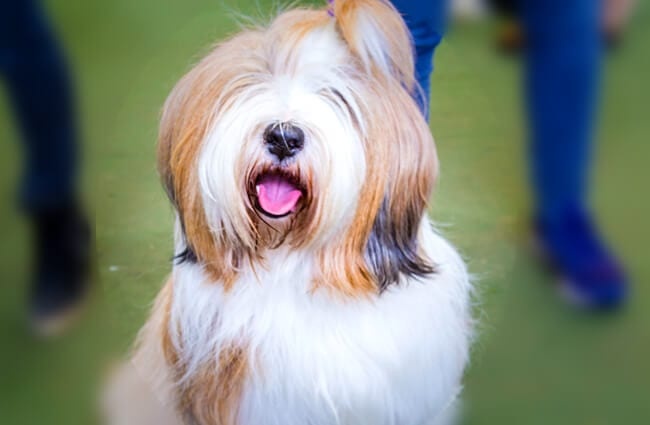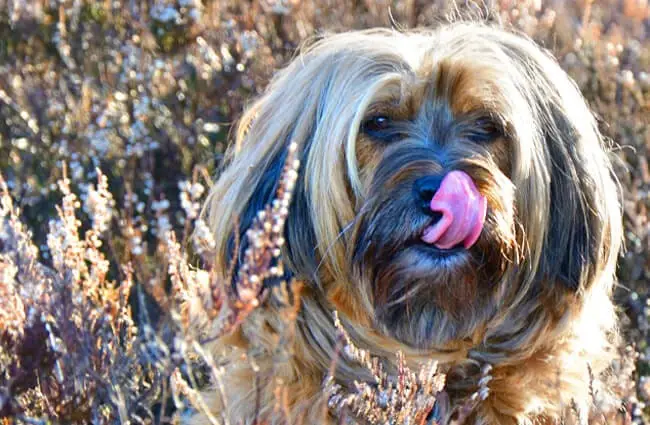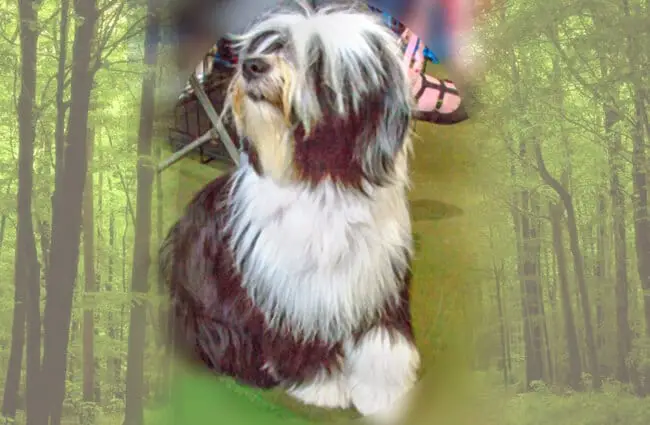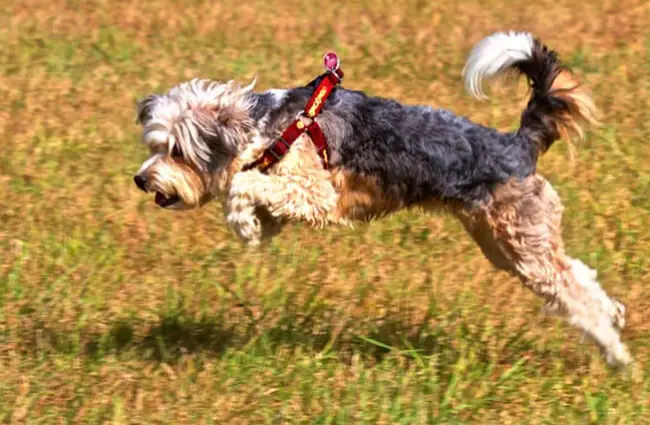The Tibetan Terrier, or TT for short, is a beautiful dog that originates from Tibetan monasteries. The monks bred them to be excellent watchdogs and companions, and they are still both of these things today! Their long and silky coat is a hallmark of the breed. If you are looking for a gorgeous and loving companion, then look no further than the TT. Read on to learn more about the Tibetan Terrier
Description of the Tibetan Terrier
As their name might suggest, the Tibetan Terrier is an ancient breed hailing from Tibet and has long been associated with Buddhist monasteries. But the other half of their name is quite misleading, as the TT isn’t actually a terrier at all!
Importing western countries incorrectly dubbed these dogs as terriers, and the name stuck. But despite their false title, the Tibetan Terrier is genuine in all their other characteristics, like their affectionate nature.
These sweet dogs have adapted a unique feature. They have “snowshoe” feet, which are flat feet that have evolved to help them walk easily across snowy terrain, a common weather trend up in the mountains of Tibet.
Their thick coat is a hallmark trait of the breed. A sheet of hair falls over their faces and adorns their curled tails. They come in all colors and any color combinations, which makes for some beautiful and unique looking dogs.
Life Expectancy and Size
Though the average lifespan of the Tibetan Terrier is 12 – 15 years, they are often susceptible to health conditions that can shorten their lives. Working with a reputable breeder can help reduce the number of health problems they may be likely to get.
The TT is a small to medium sized dog, but is quite compact and travels easily. They stand 14 – 17 inches tall and weigh 15 – 30 pounds.
Protective Ability
Bred to stand sentinel at the doors of Tibetan monasteries, the Tibetan Terrier is a vigilant watchdog and quick to sound off if strangers approach. They may be wary around strangers at first but often warm up quite quickly after being introduced.
Training
The Tibetan Terrier is a smart dog, making this breed popular with trainers. They learn quickly and do best when given the opportunity to find the right behavior on their own.
For this reason, positive rewards-based training is best. Clicker training, treats, and exciting games are a great way to motivate your Tibetan Terrier and keep his interest. Always change things up so that your TT stays focused and engaged. These dogs know that working for something like a tasty treat is always a fun and rewarding experience.
Canine sports are also a great way to mentally stimulate your dog, get him active, and add in some bonding time. Agility, rally, and nose work are great choices for this breed.
Energy Level
Each Tibetan Terrier is very unique, and a good breeder will be able to help you select a dog that is perfect for your lifestyle. Some TTs are very energetic while others are happy to lounge around on the couch with you. But no matter how active or sedentary your dog is, always be sure to give them daily exercise so they say fit and healthy.
What Living with a Tibetan Terrier is Like
This is an all-around kind breed.
These dogs love their families and are great with kids and other dogs they have been raised with. You can expect a fun-loving and loyal dog in your Tibetan Terrier.
Active and sedentary families alike can enjoy the company of the Tibetan Terrier. Incorporating some fun bonding games and exercises are great ways to spend time with your dog. But whether you are running up a mountain or reading on the couch, the TT is just happy to get to spend time with you.
Care of the Tibetan Terrier
The Tibetan Terrier is quite adaptable. Whether in a city high-rise or out in the mountains, these dogs are happy to be anywhere as long as it is with you.
Environmental Needs
Though bred for the cold mountainous regions of Tibet, the Tibetan Terrier does well in both hot and cold climates. They are versatile and ready for anything.
Exercise Needs
These small dogs are quite rugged and always up for a challenge. While a long daily walk is often enough to keep them fit, they are also happy hiking, biking, running, or doing any other number of activities with their family.
But if you prefer to live a less active lifestyle the Tibetan Terrier is up for that too. These dogs love to relax with their families, just be sure to get them outside everyday for at least a few rounds of fetch or some other activity.
Shedding and Grooming
While the profuse coat of the Tibetan Terrier may be a turn off to some, it is really a great attribute for this breed and can provide an excellent bonding opportunity.
Grooming your dog’s coat allows him to be near to you and won’t seem nearly as time intensive after a few sessions. It also helps protect them from the elements. Regular grooming will keep your dog’s coat clean and healthy.
This breed sheds frequently.
Always keep your TT’s nails trimmed and ears cleaned to avoid any discomfort or infections.
Ideal Home Environment
The Tibetan Terrier is a great breed for pretty much anyone. These loving and loyal dogs are quite sensitive to the needs of their family. They make a good choice for children and love to offer companionship.
All these dogs ask for in return is affection and some daily exercise, a small request given how much these dogs love to do for their families.
The Tibetan Terrier can have health issues that may be costly or time consuming to deal with, so always be prepared for anything to happen before adopting your dog.
Health Concerns
When humans brought the Tibetan Terrier West from Tibet, they ended up inheriting many diseases they didn’t have before. These include heart murmurs, cataracts, vestibular disease, cancer, allergies, thyroid issues, bladder stones, periodontal disease, and hip and patella issues. Regular checkups and working with a reputable breeder can help mitigate these problems.
Behavior Problems
Bred as companions, the Tibetan Terrier loves his family and does not do well if left alone for long periods of time. Be sure to provide plenty of daily interaction and socialization to help prevent the development of separation anxiety in your dog.


























![Red Angus Closeup of a beautiful Red Angus cowPhoto by: U.S. Department of Agriculture [pubic domain]https://creativecommons.org/licenses/by/2.0/](https://animals.net/wp-content/uploads/2020/03/Red-Angus-4-100x75.jpg)

